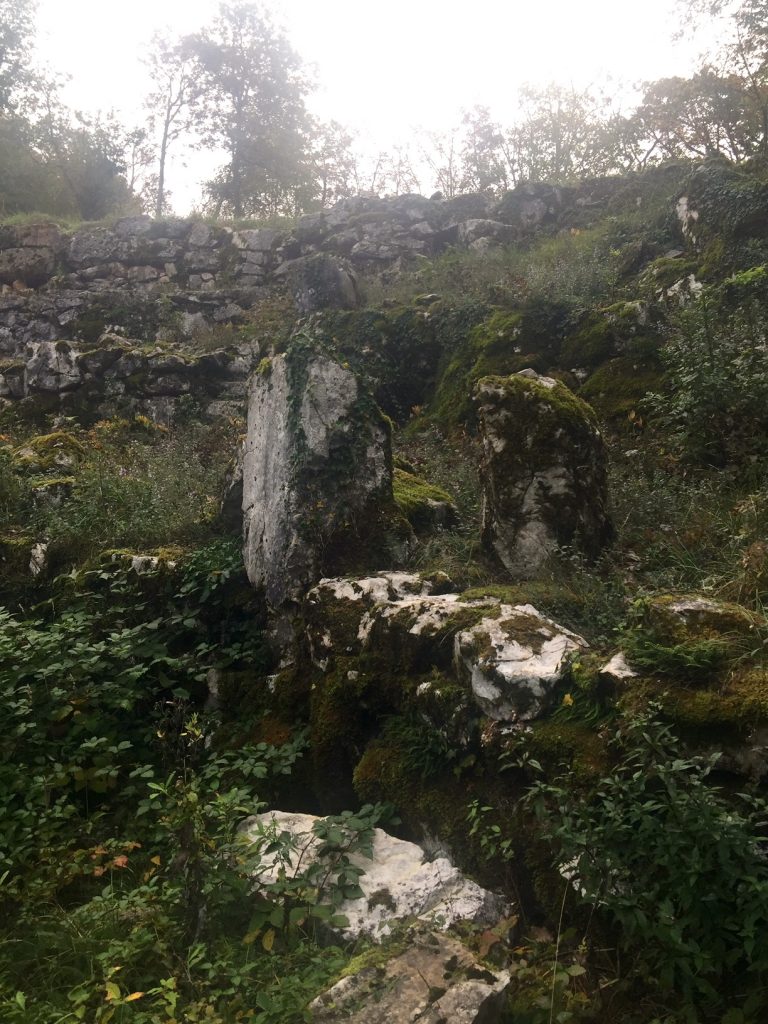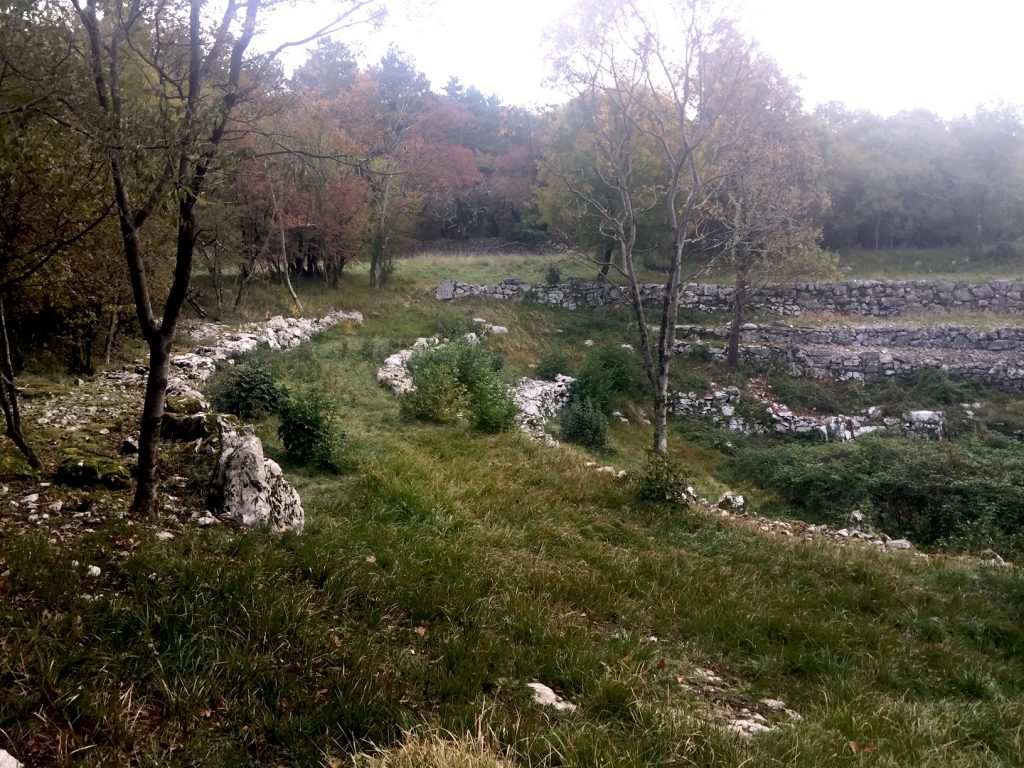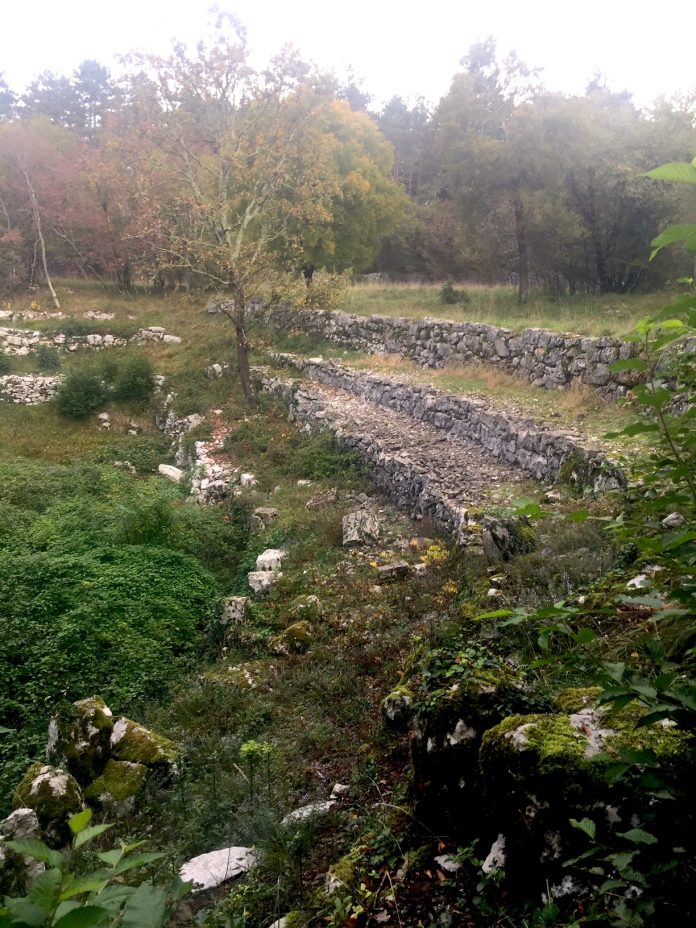By Alessandra Ressa
One of the most fascinating aspects of Trieste is its rich and diversified history. From the Stone Age to the Cold War, this lovely city on the Adriatic sea has seen it all. And it is always eager to tell you about it, wherever you go.
Among the many surprising sites in Trieste, there is a mysterious version of a miniature Stonehenge in the heart of the Karst hills. It is located along the border with Slovenia, just 10 kilometers from the city, in Basovizza. It is called Dolina dei Bogomilli and it is situated in a natural dolina: a depression of the terrain caused by the collapse of an underground cave.

Dolinas can be found everywhere in the hills surrounding Trieste. They look like bomb craters although no major artillery battle took place there. A long time ago, the Karstic land was rich in subterranean rivers that excavated thousands of underground caves. Some of them were huge- several kilometers long.
A few of these caves collapsed and the above terrain sunk, thus forming these hollow depressions. A few of the caves are tiny, some enormous, some are still connected to the underground caves: the deep vertical bottomless holes called orridi. Many others are smaller like the natural infamous pits known as foibe, where many people found their death in the difficult geopolitical events that followed WWII along the Italian-Yugoslavian border.
According to the archeologists, the name of the site is connected to other ancient remains found in Bosnia-Herzegovina, which were linked to the Heresy of the Bogomilly – a religious sect from the 10th century that came from Bulgaria and settled first in Russia and later in the Balkan area.

The site in Basovizza is clearly ancient, and a lot of people must have been involved in its construction judging by the size of the megaliths. It is built with ancient stones which form a large triangle together. Three terraced circles surround it and within each circle deep tunnels in the stone hid large chambers. One of these chambers has remained intact and can still be visited today through a muddy, low tunnel (don’t forget to bring a flashlight).
Large megaliths surround the construction, some more than three meters high. Other large stones, which were probably stolen, formed a roof in the central part of the structure. At the beginning of the last century the whole construction was surrounded by a high stone wall with one entrance gate. The stones of the wall have then been removed to be used for the buildings of the port of Trieste.

It is still unknown who built our local Stonehenge, when and why. Archaeological excavations have unearthed Roman pottery and utensils, but they are too meek a lead to solve the mystery of the site. The first time the site was mentioned in the official documents was in 1630, when the borders of Trieste were being established. In this document, the site was referred to as “The Courtyard of Mysteries”, thus revealing that even then the origins and functions of the site were unknown.

There are several possible explanations according to local historians. One of them is that it was a Celtic temple built to honor the god Cernunnos. In the area there were several settlements of a Celtic tribe known as the Carnians. Another explanation, once again linked to the Celtic population, was that the site was used as a court or some sort of tribunal.
A third hypothesis is that of Borgomillian origin. A few local historians believe it could have even been a theater. To support this theory the remains of a huge caravanserai can still be admired nearby amid the forest. The historians supposed that if the area had been a traditional meeting and a commercial point for people, there would have been a theater – a tradition most likely introduced by Istrian populations.
Many more legends, inspired by Celtic folklore and popular beliefs, full of supernatural beings, fairies and even satanic rites, are connected to this place.
Although the place is not easy to find, it is definitely worth a visit. From the village of Basovizza you have to take the main Ressel hiking path towards Sesana (Slovenia) and take the first narrow path to the left. The path will lead you to the site after about 600 meters. The site is not easy to see from the path and there are no signs anywhere.

If you feel adventurous, after visiting this little Sonehenge, you can then follow the path (stay on the main one) all the way through the woods, where you will see ancient stone shelters, bottomless vertical drops and dolinas, all the way to the lovely village of Gropada.
There, you can enjoy a great meal at the only one family-owned gostilna in town. They also serve excellent coffee and offer a wide variety of locally grown organic fruit and vegetables for sale.






























I came across your article online and though this is an extreme long shot, I have a photo of my dad when he was stationed in Trieste in 1948 with the British Army, and it says on the back “On the Yugoslavia border”. From looking at google earth views, I believe it was taken by the border crossing near Sesana to the north west of Trieste. He is also standing on a large and ruined old stone wall formation. I would love to send you the photo to see if you recognize the view to see if my hunch is correct.
Let me know by emailing back.